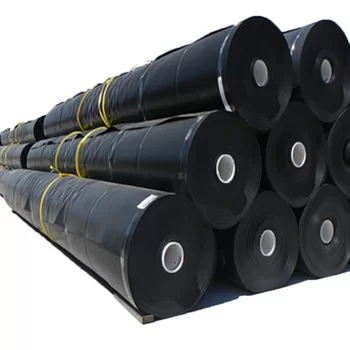Securing water containment solutions in regions with harsh weather conditions is a challenge for many industries, including agriculture, aquaculture, and mining. Choosing the best gauge dam liner is crucial for ensuring durability, efficiency, and long-term cost savings. This guide dives deep into the critical aspects of dam liners, including their types, gauges, and performance in harsh weather. We also provide data-driven insights, tables for easy comparison, real-life examples, and actionable advice.
Why Gauge Matters in Dam Liners
The “gauge” of a dam liner refers to its thickness, measured in millimeters (mm) or mils. It is one of the most critical factors influencing a liner’s durability and performance in extreme weather. Thicker liners generally provide greater resistance to wear and tear, UV radiation, and punctures caused by rocky terrains.
Gauge vs. Weather Resistance
| Gauge (mm) | Best Use Cases | Weather Resistance |
|---|---|---|
| 0.5 mm | Light-duty ponds or small tanks | Low |
| 1.0 mm | Moderate weather conditions | Medium |
| 1.5 mm | Harsh environments (e.g., intense UV exposure) | High |
| 2.0 mm | Extreme weather (e.g., freezing/thawing cycles) | Very High |
Types of Dam Liners Suitable for Harsh Weather
There are various materials used in dam liners. The right choice depends on the specific challenges posed by weather conditions.
1. High-Density Polyethylene (HDPE)
- Durability: Exceptional resistance to UV radiation and chemicals.
- Gauge Range: Typically 1.0–2.0 mm for harsh weather.
- Use Cases: Mining, large-scale water reservoirs.
- Statistics: A study by Environmental Research Journal revealed that HDPE liners last up to 25 years under intense UV exposure.
2. Low-Density Polyethylene (LDPE)
- Durability: More flexible but less resistant to UV compared to HDPE.
- Gauge Range: Commonly 0.5–1.5 mm.
- Use Cases: Aquaculture, irrigation ponds.
3. Polyvinyl Chloride (PVC)
- Durability: High flexibility, moderate UV resistance.
- Gauge Range: 1.0–1.2 mm for extreme conditions.
- Use Cases: Decorative ponds, small reservoirs.
4. Reinforced Polypropylene (RPP)
- Durability: Excellent tear resistance and flexibility.
- Gauge Range: 1.2–2.0 mm.
- Use Cases: Heavy-duty industrial applications.
| Liner Material | UV Resistance | Temperature Range | Cost |
|---|---|---|---|
| HDPE | Excellent | -40°C to 60°C | $$ |
| LDPE | Moderate | -30°C to 50°C | $ |
| PVC | Good | -20°C to 45°C | $$ |
| RPP | Excellent | -40°C to 70°C | $$$ |
Factors to Consider When Choosing a Dam Liner for Harsh Weather
- Climate Conditions: Areas with high UV exposure or freezing/thawing cycles demand thicker and UV-resistant liners.
- Chemical Exposure: Industrial sites may require liners with high chemical resistance, like HDPE.
- Flexibility vs. Rigidity: Flexible liners like RPP are better for irregular surfaces, while rigid ones like HDPE are ideal for large reservoirs.
Real-Life Example:
A dairy farm in Australia switched to 2.0 mm HDPE liners for their water reservoirs. Despite scorching summers (40°C) and freezing winters (-5°C), the liners showed minimal wear after 15 years.
Cost Analysis of Dam Liners
| Gauge (mm) | Material | Cost per m² | Lifespan (Years) | Maintenance |
|---|---|---|---|---|
| 1.0 | HDPE | $4–$6 | 10–15 | Low |
| 1.5 | PVC | $5–$7 | 8–12 | Medium |
| 2.0 | RPP | $8–$10 | 20–25 | Low |
Installation Tips for Maximum Efficiency
- Use a Geotextile Underlay: Prevents punctures from sharp rocks.
- Proper Seaming: Ensure seams are heat-welded to prevent leaks.
- Anchor Trenches: Secure the liner against wind uplift.
External Resources for Installation
Benefits of High-Gauge Liners in Harsh Weather
- Extended Lifespan: Liners with gauges of 1.5 mm or more resist cracking and UV degradation.
- Lower Maintenance: Fewer repairs over time reduce costs.
- Versatility: Suitable for various industries, from agriculture to mining.
Case Study: HDPE Liners in Desert Conditions
Background:
A mining company in Nevada faced challenges with their water containment systems due to intense heat and UV exposure. They opted for a 2.0 mm HDPE liner.
Outcome:
- Initial Cost: $50,000.
- Savings: $20,000 in maintenance costs over five years compared to previous PVC liners.
- Durability: Zero breaches reported in the first 10 years.
Call to Action
Ready to choose the best gauge dam liner for your project? Whether you’re battling intense heat, freezing conditions, or chemical exposure, we’ve got you covered!
👉 Contact Us Today for a free consultation or request a sample to see the difference!
For more insights, stay tuned for updates on sustainable water containment solutions. 💧
Originally posted 2024-11-26 22:00:00.

